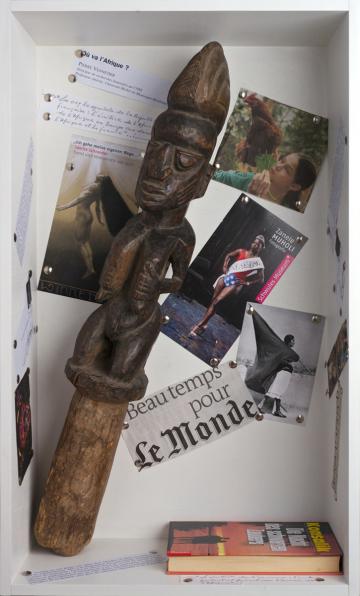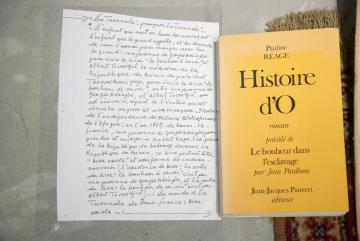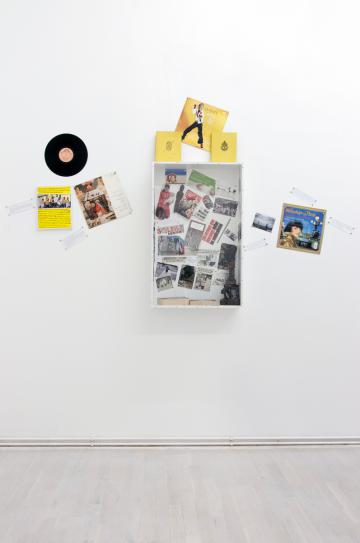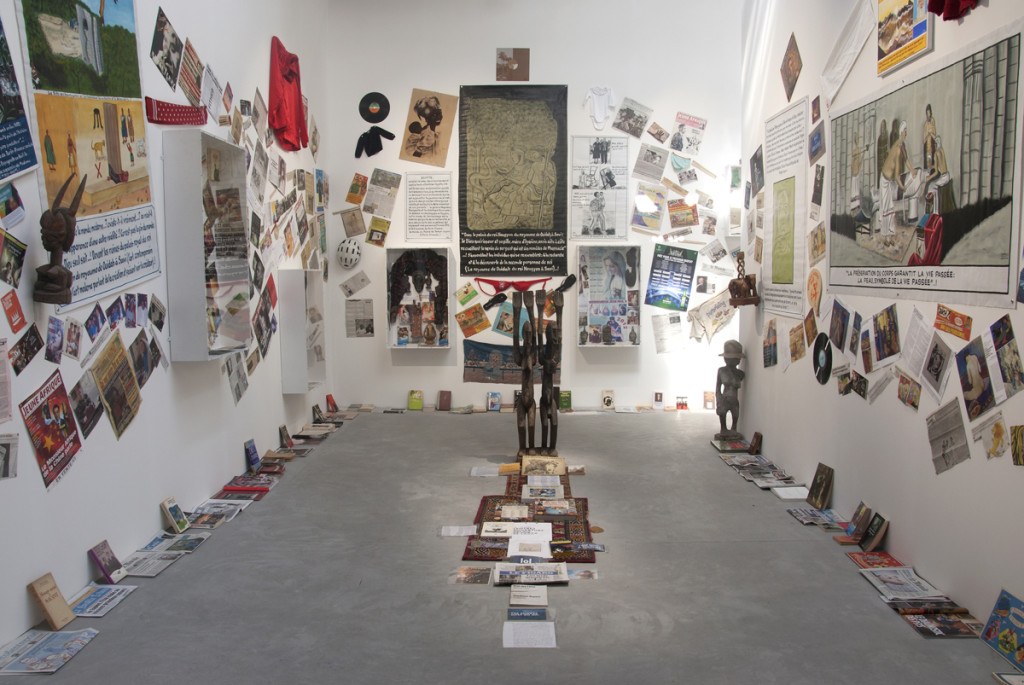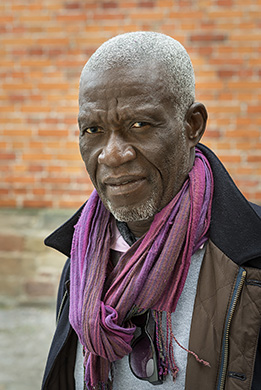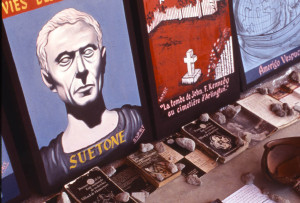
Abraham–L’ami de Dieu (Abraham–Friend of God) [Philadelphia version], 2000-2006, is in the collection of the Phildelphia Museum of Art.
All the pictures in this post are from the installation “Les artistes et l‘écriture”..!, 2014, as shown in Galerie Wien Lukatsch, Berlin, 2014.
About:
Georges Adéagbo, born in Cotonou, Benin (West Africa) in 1942 as the eldest of eleven children, left home for university studies against his father’s will. After completing a two-year law course at a college in Abidjan, Ivory Coast, he continued his studies in France. One of the most witty and well-dressed students, Adéagbo was on his way in 1968 to a degree, a secure job, and marriage to his French fiancee, when news of his father’s death began to rock the boat of his voyage to success.
Having resisted for almost three years the frequent pleas of his family to assume the eldest son’s duty of taking his father’s place, Adéagbo finally agreed to return to Benin for a short Easter visit. However, a cousin confiscated all his documents, hoping to hold him to the house and to his African heritage. Yet Adéagbo did not accept the role he was expected to play. Missing his fiancee and seeing trouble in a traditionally-arranged marriage, he did not meet even one of the many potential brides his mother tried to introduce to him.
Adéagbo went to the riverbank daily, sat on the same rock, and meditated on the meaning of his destiny and the laws of nature. None of his kin would listen to his insights, and so he began to create constellations to illustrate his discoveries with his own original texts and objects collected from daily life. Regarded by many as a fool, Adéagbo was sent to a mental institution eight times. Convincing the doctors with his sharp-minded arguments that he was sane, in a way yet not understood by people blessed only with common sense, his stays never exceeded more than a couple of months.
He remained single and lonely after his mother died in 1973, and his brothers and sisters left home, some settling, ironically, in France. For 23 years Adéagbo lived on minimum income, just barely enough for food and a few cigarettes, daily continuing his philosophical studies which he visualized in the form of installations. Initially only in his room, his works soon occupied the entire sand-covered court of his home. Finally, in spring 1993, a French curator, who came to meet well-known artists in Cotonou, was brought by mistake to Georges Adéagbo’s home. Astonished by what he saw, the “savior,” as he is referred to by Adéagbo, took plenty of photographs to show his colleagues back in Paris.

In March 1999, independent curator Stephan Köhler invited Georges Adéagbo to prepare an installation in homage to the city of Venice for the Campo dell’Arsenale. Planned simply as a parallel event to the opening of the Venice Biennale, Adéagbo’ one-day installation was miraculously accepted as an official contribution for the dAPERTutto only a couple of weeks prior to the opening and was awarded with a prize of the jury.
Georges Adéagbo emphasizes that he does not consider himself as an artist, who creates art works to please the public, but as someone who makes installations about ‘art’, which are exclusively site specific. In 1999 and 2000, two famous exhibition makers had old compositions reinstalled totally out of context, even though Adéagbo was willing to make a new work, related to the location and theme of their exhibitions. Also his first installation ‘L’Archaeologie’ to be seen in France in 1994 got lost due to a cargo ship loosing containers in the Caribbean. This lack of comprehension for the specific nature of his work and technical negligence triggered lots of doubts in Adéagbo about the practice of the art world. In autumn 2000, one major institution bought the installation Adéagbo made for them, a recognition of the fact that his works are custom tailored and cannot be shown other than the original site they were made for.
After having completed his fifth and last installation this year for P.S.1 in New York, Adéagbo plans to spend more time in his new studio on the coast of Benin. Rather than traveling around so much, he is in the process of launching an artist’s in residence program in Benin, planing to invited selected artists to learn more about Africa and re-investigate the validity of existing categories and clichés. He named this new project “Villa Dieu Seul Sait”
Adéagbo’s participation at the exhibitions “The Short Century” and Documenta 11 gave access to his work for a large audience, but also triggered questions about nowadays curatorial practice.

